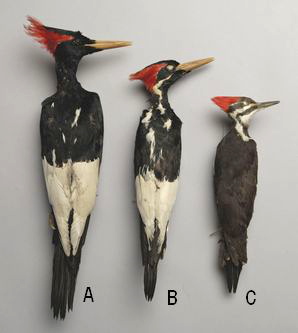

Lesson plan note: Draw an outline of woodpecker. They are currently listed as critically endangered species.They make cackling and trumpet like sounds.They are usually found in groups of 4-8 individuals and seldom in groups of 20.The decrease in their population resulted because of destruction of their habitat and hunting practices. This gargantuan woodpecker fed on beetle larvae infesting dead and dying pines. It had existed for millennia in the old growth conifer forests of Mexicos Sierra Madre Occidental. Imperial woodpeckers are the largest woodpeckers found in this world in terms of their size.In late 20th century, it was believed that imperial woodpeckers have gone extinct. Historically, the Imperial Woodpecker has inhabited montane white pine, Montezuma pine, and oak forests of the mountain range that runs down western Mexico. The Imperial Woodpecker, largest in the world, was last seen in the 1950s. They feed on beetles present in the crevices of tree trunks by tapping it hard using its ivory colored bill. Almost exclusively found in remote and secluded forests in the past, if not extinct, sightings of this very rare bird in the future are unlikely.
#Imperial woodpecker Patch
Males have a distinct red patch at the back of their neck. Historically, the Imperial Woodpecker has inhabited montane white pine, Montezuma pine, and oak forests of the mountain range that runs down western Mexico. Young imperial woodpeckers are brown in color. Its beak is long and ivory white in color. Researchers have discovered that the imperial woodpecker has slow climbing strides and a fast wing-flap rate compared with other woodpeckers. If it is not extinct, it is the world's largest woodpecker species, at 5660 cm (2223.5 in) long. It is pitch black in color and has white spots on both of its wings. The imperial woodpecker is a woodpecker species endemic to Mexico. They weigh about 700g and are 56-60cm long.

Imperial woodpeckers are localized in 2,000m high pine trees found in Sierra Madre Occidental mountain range in Mexico.

Interesting Facts about the Imperial Woodpecker


 0 kommentar(er)
0 kommentar(er)
